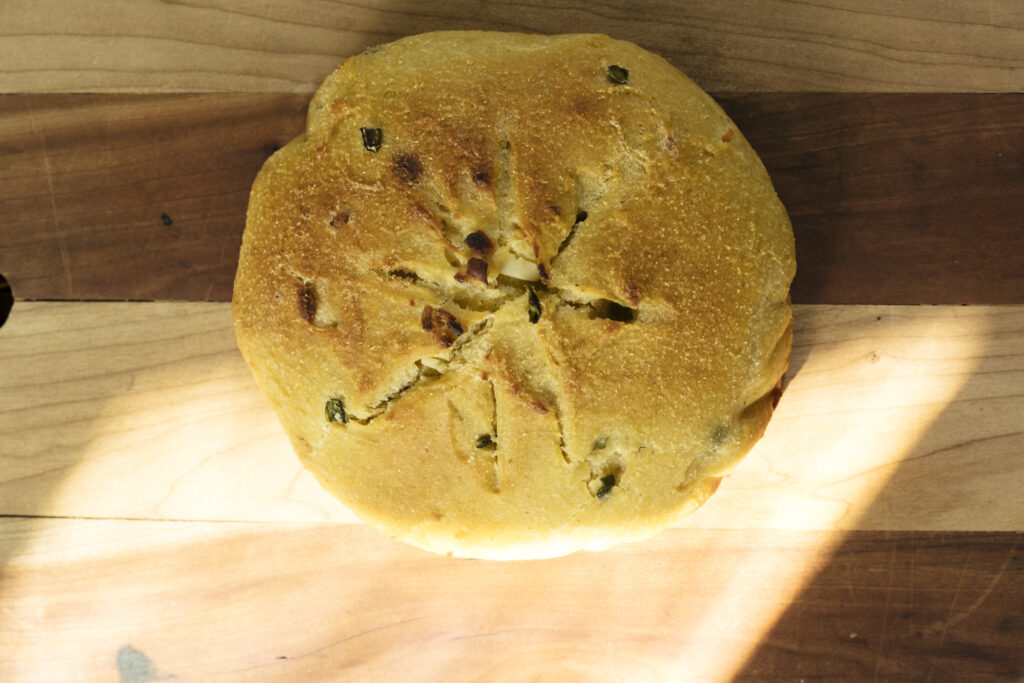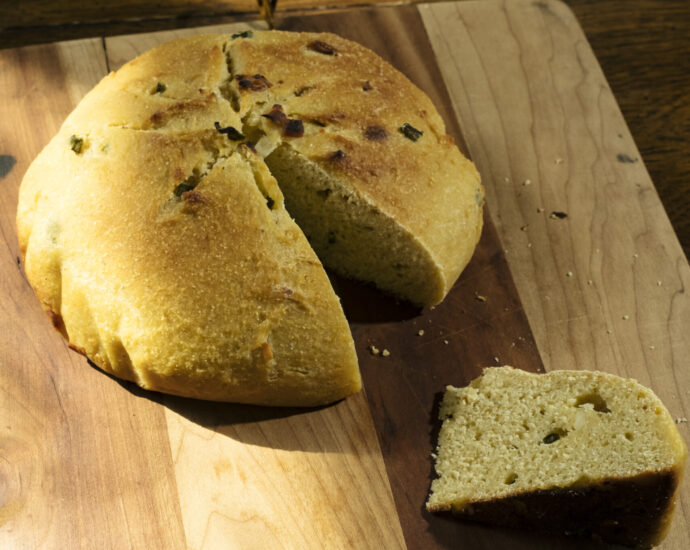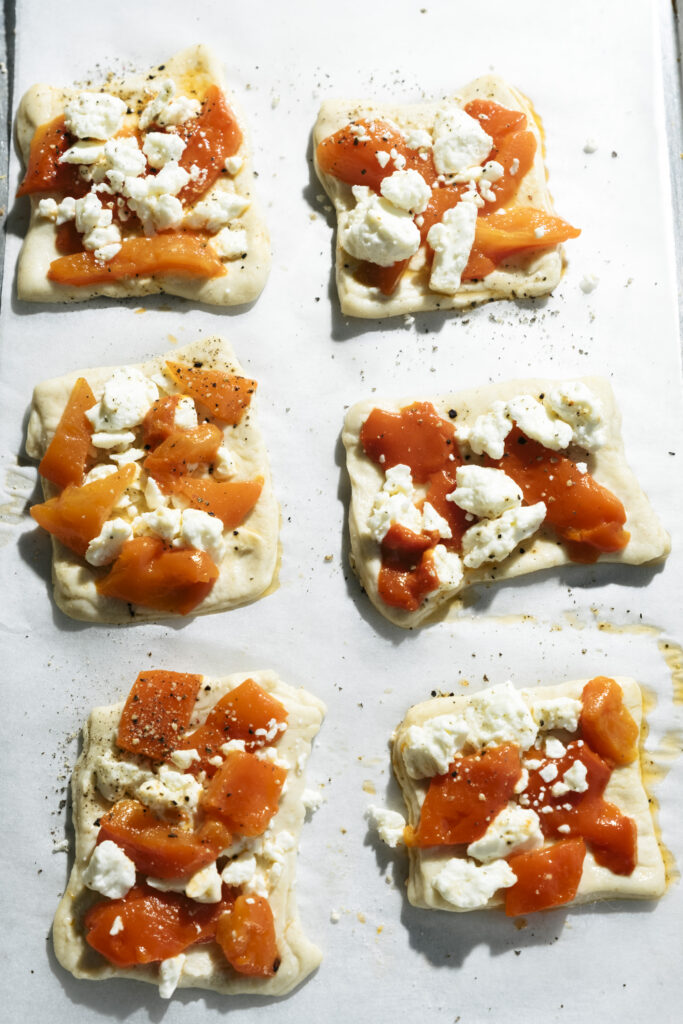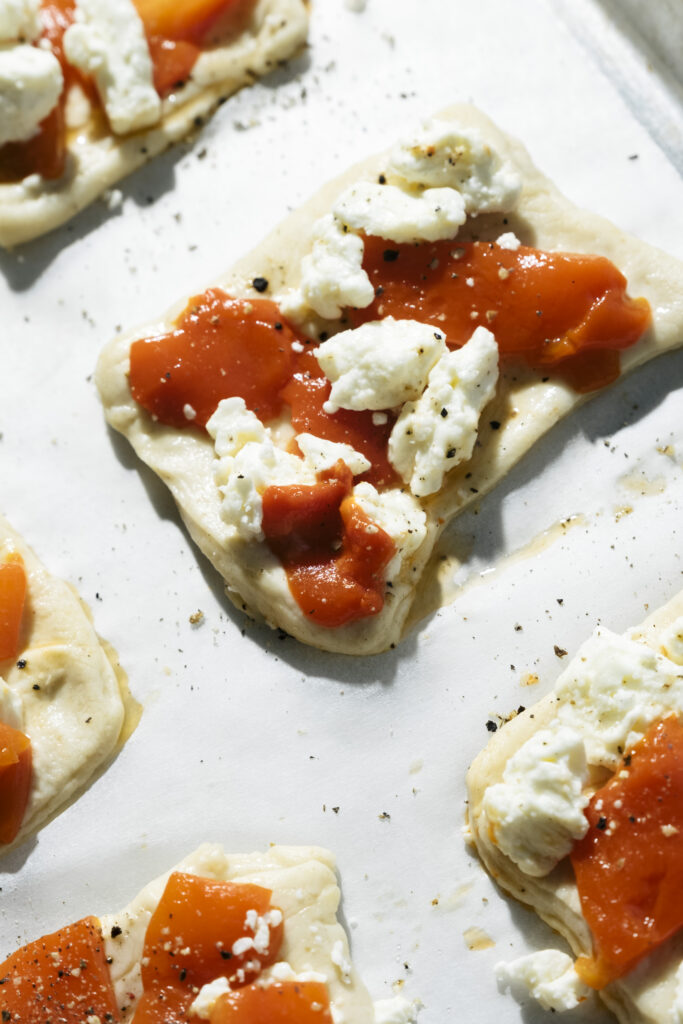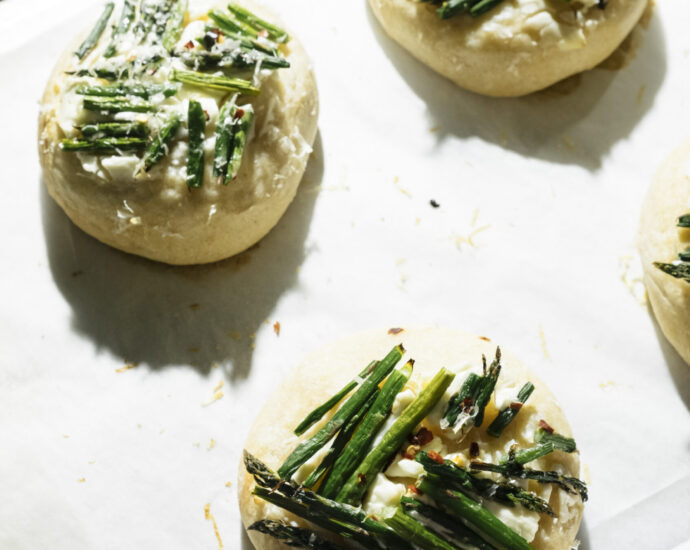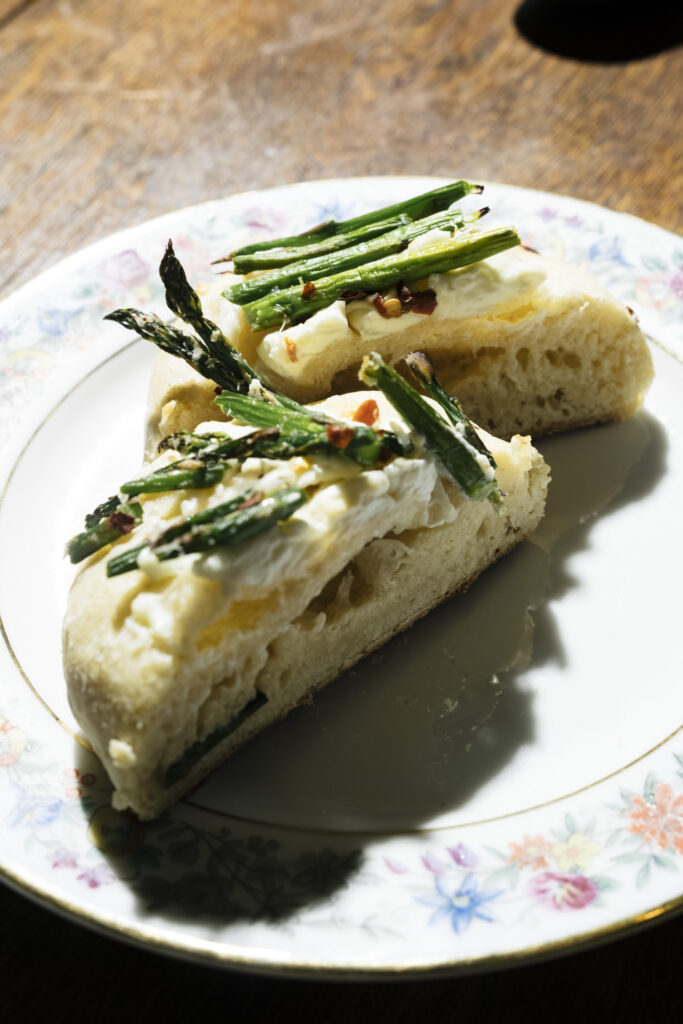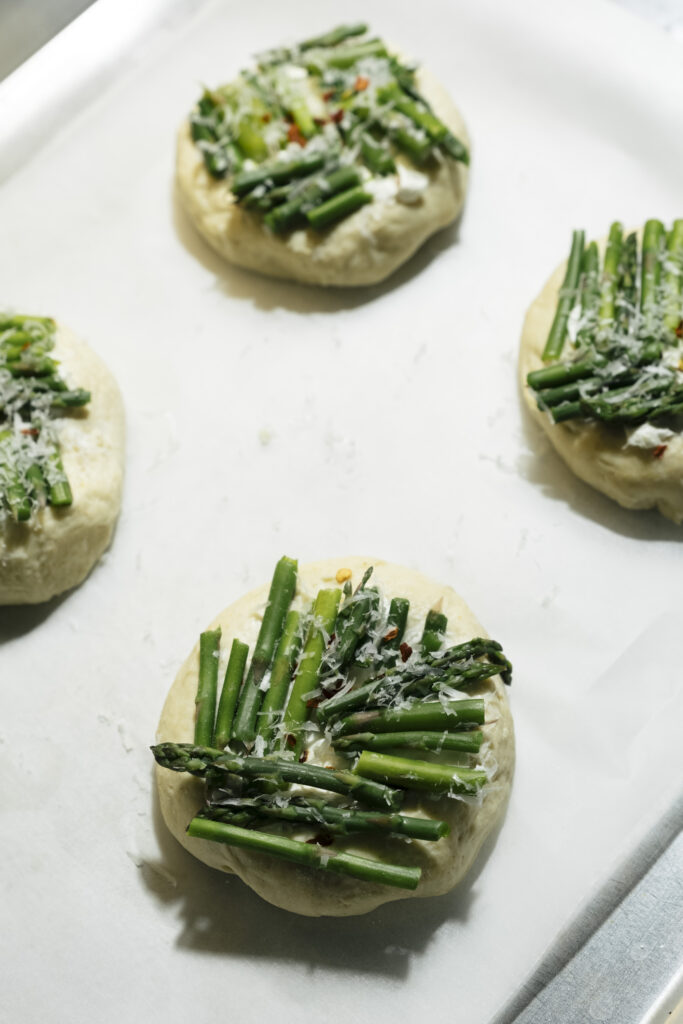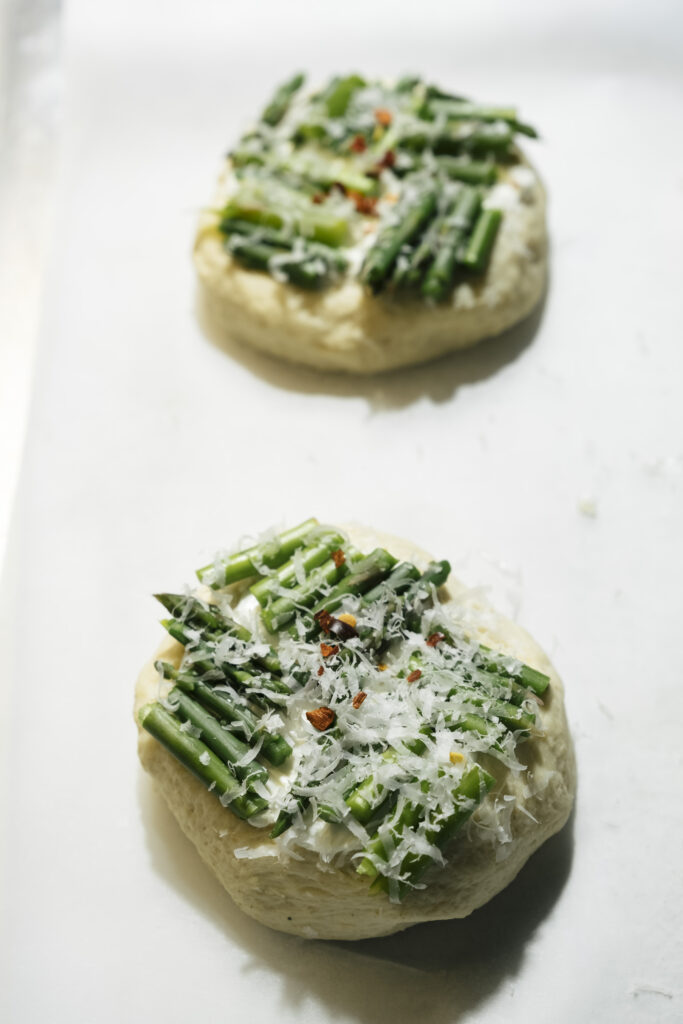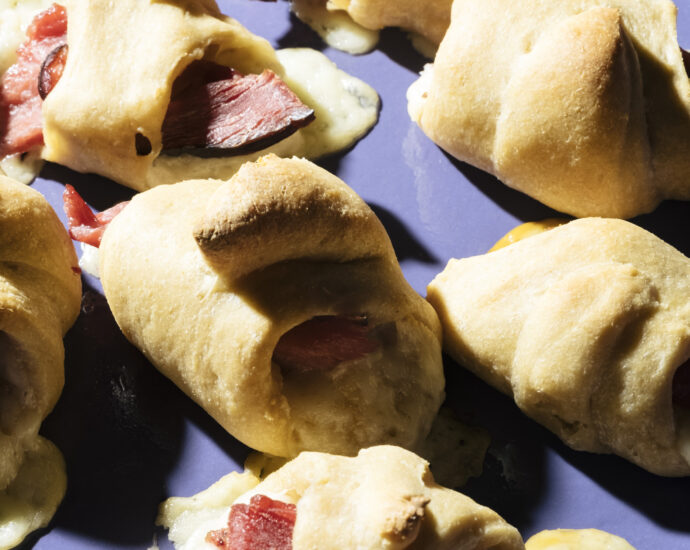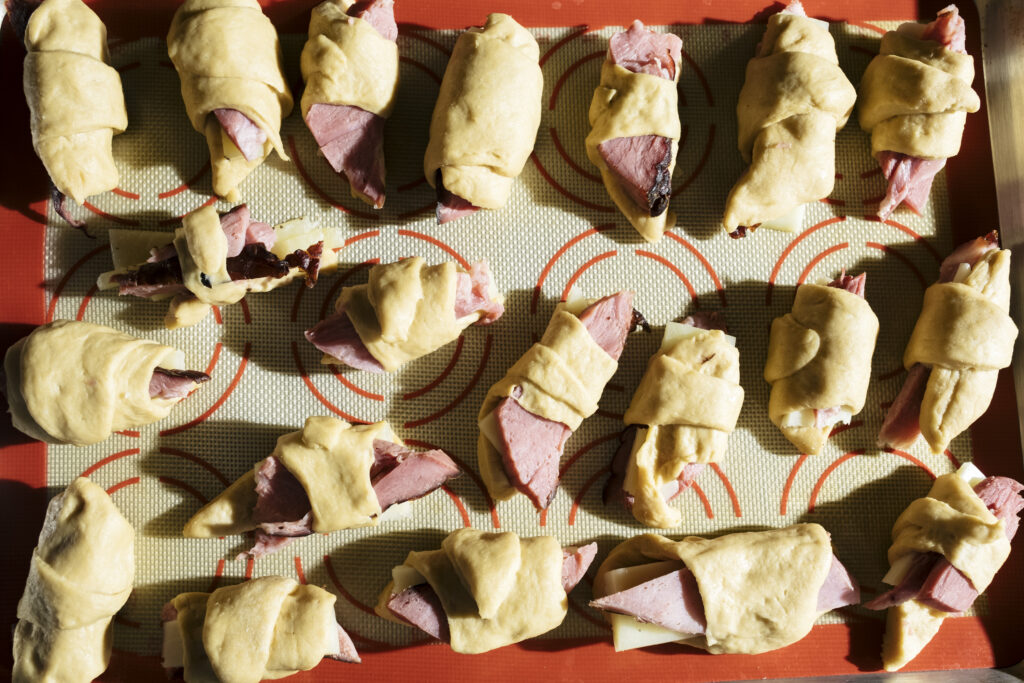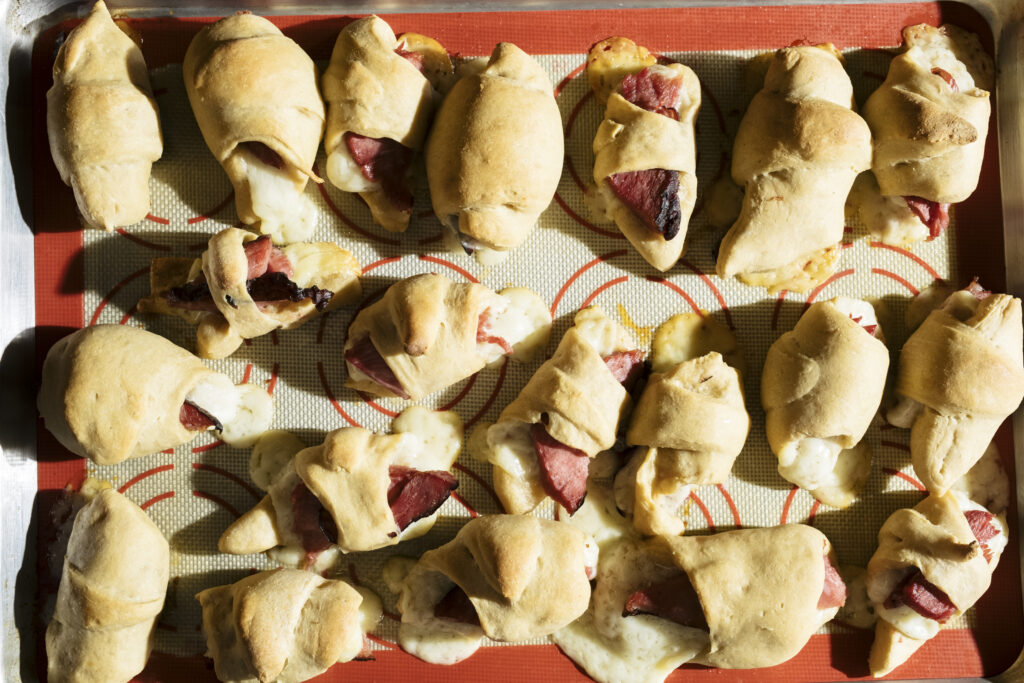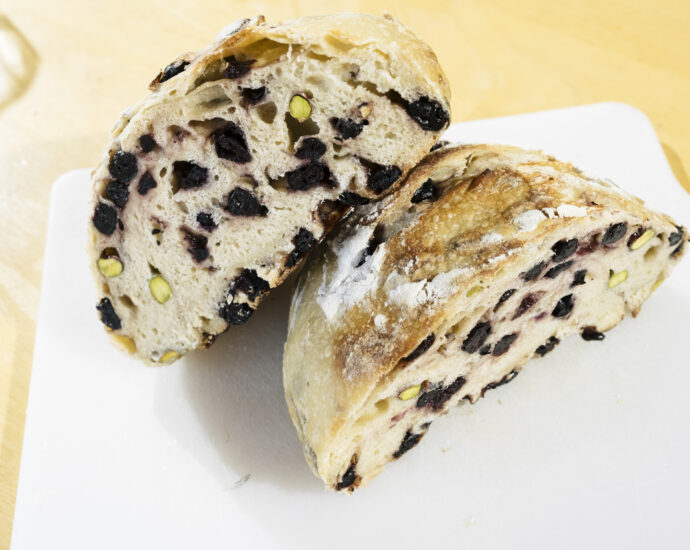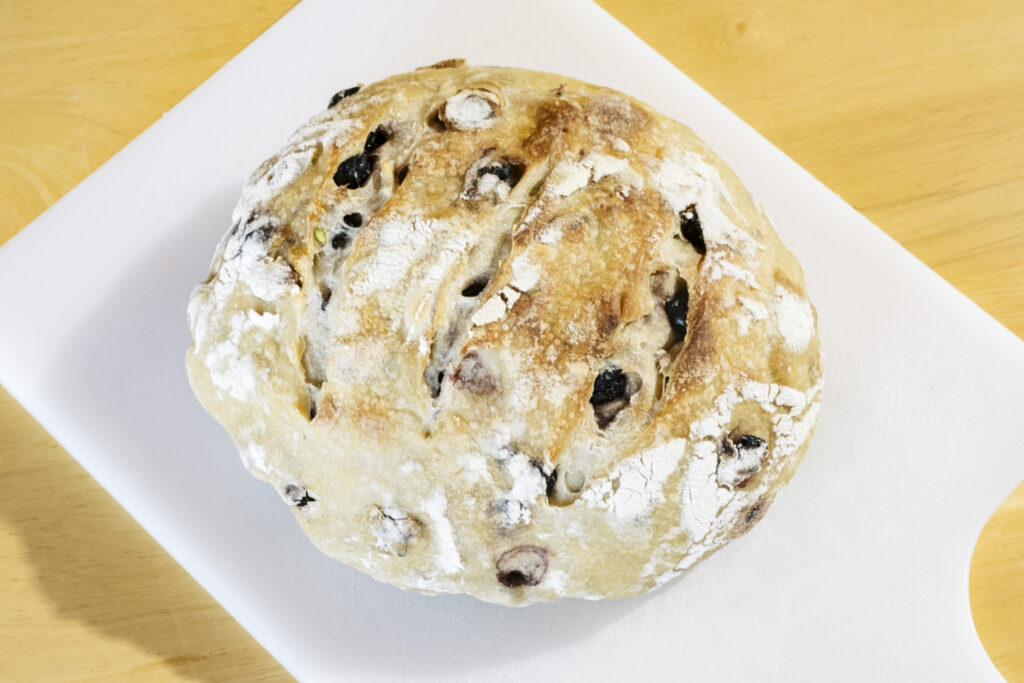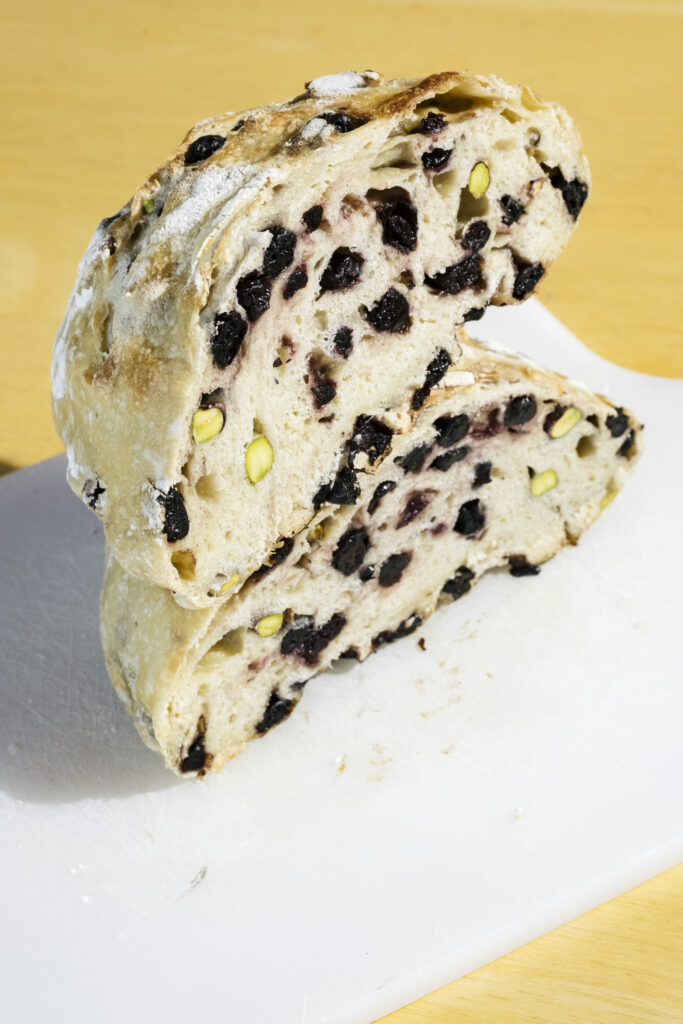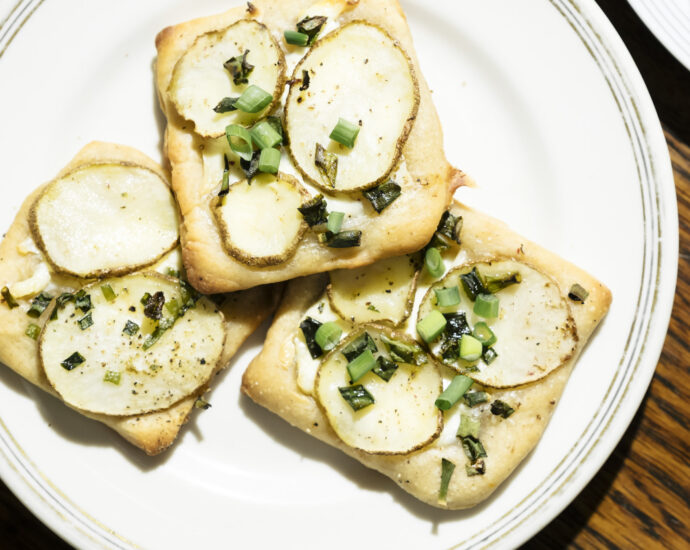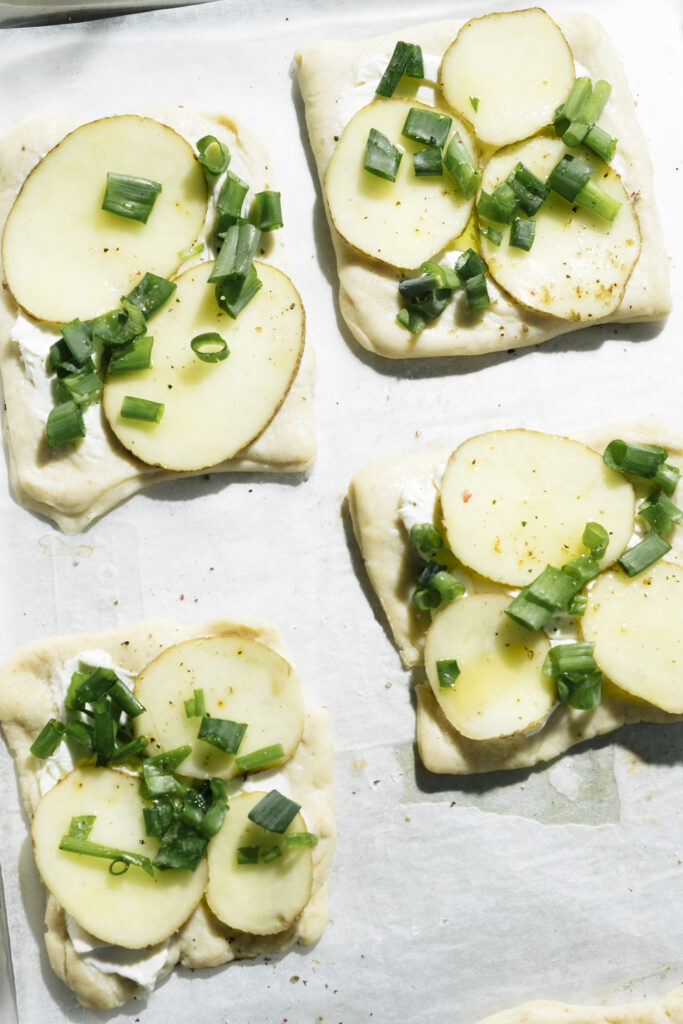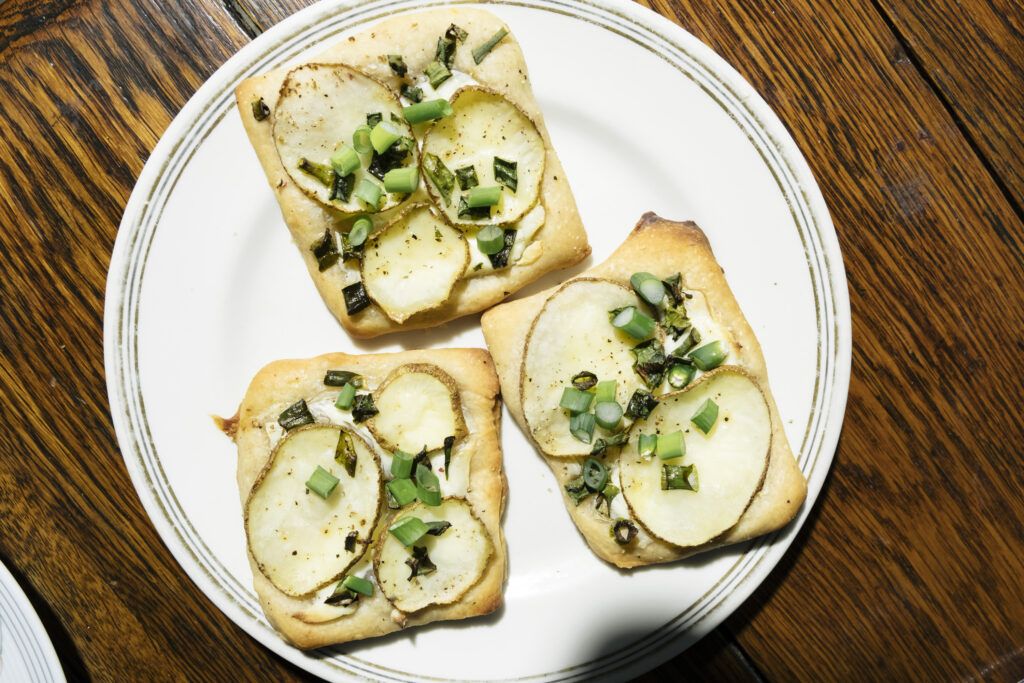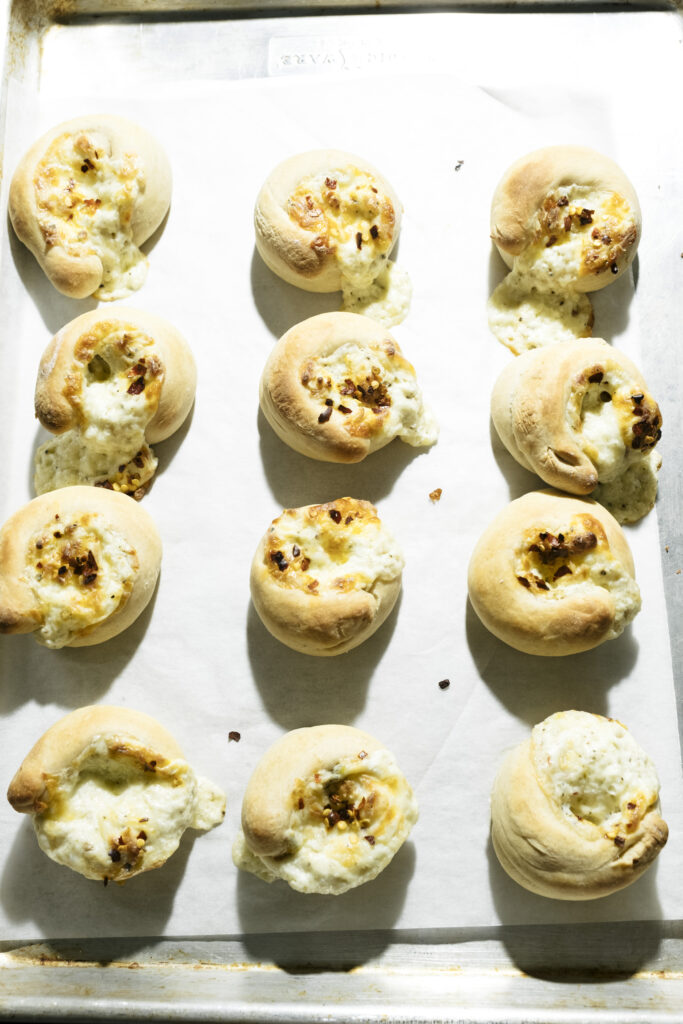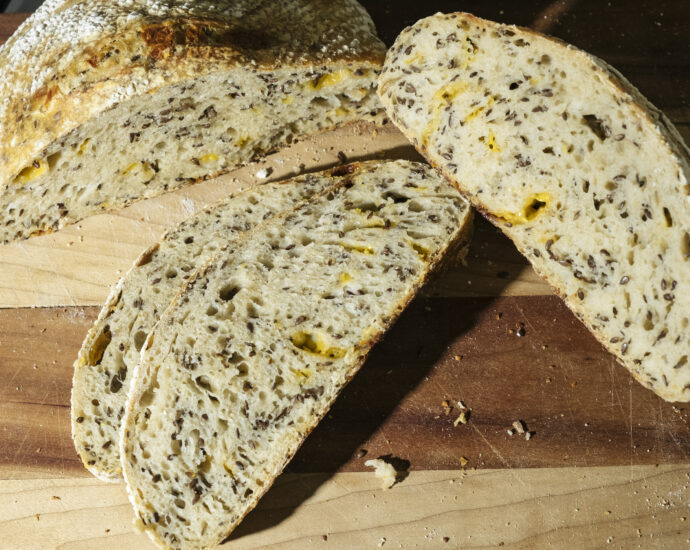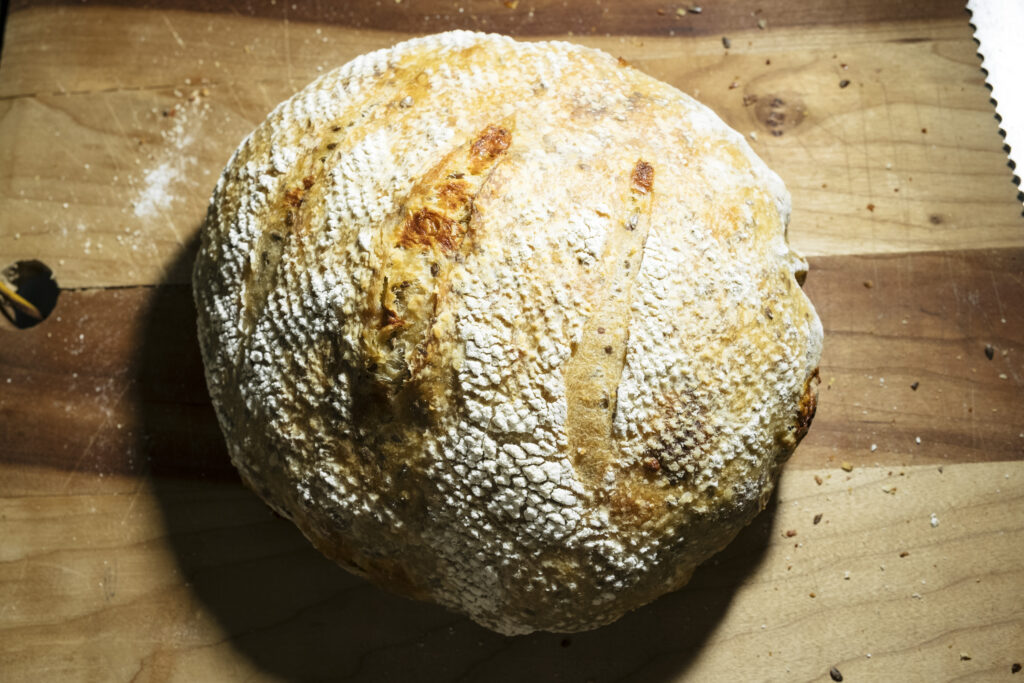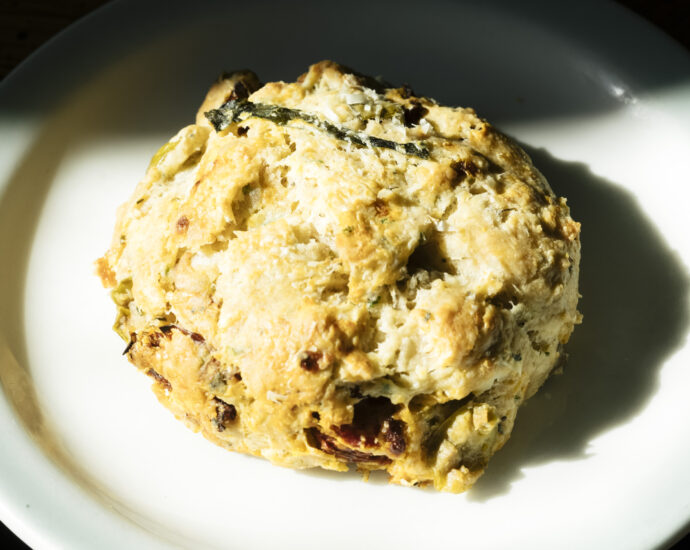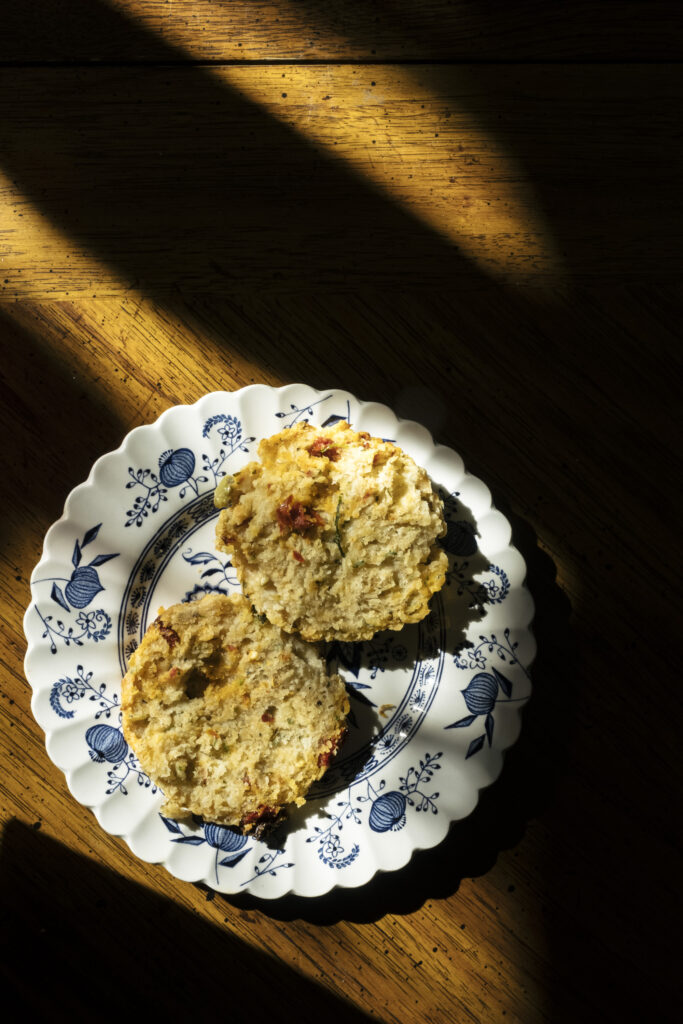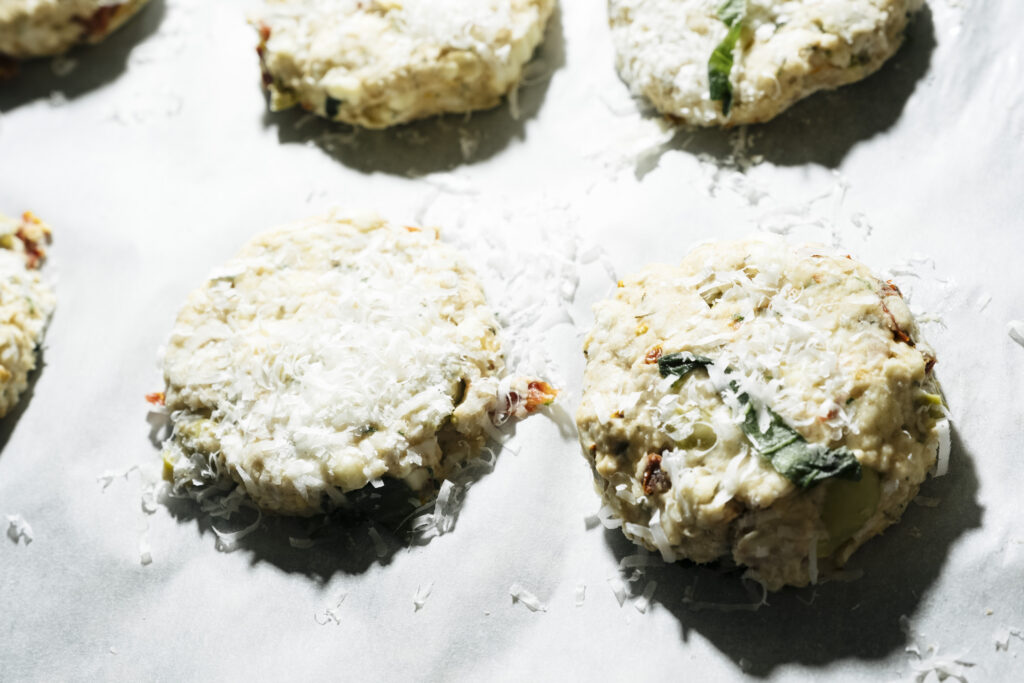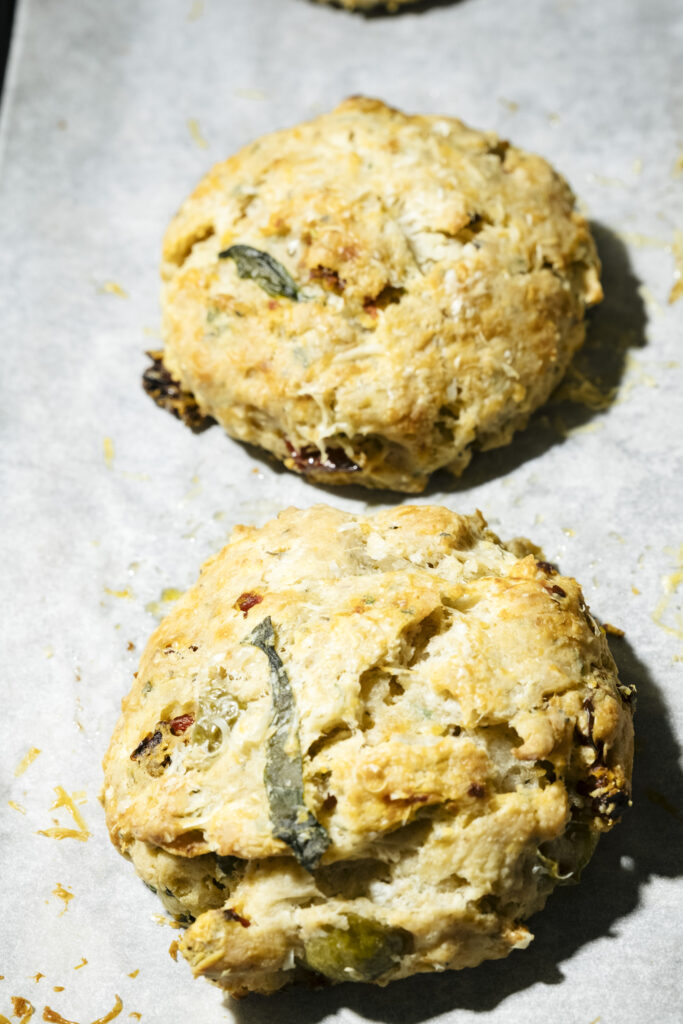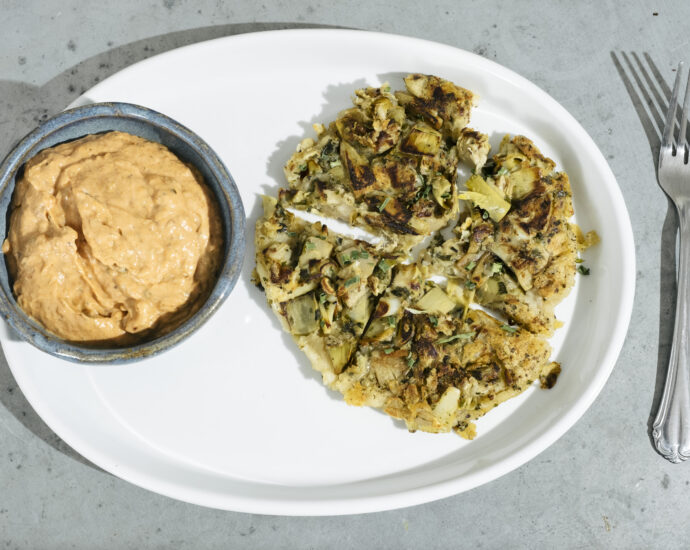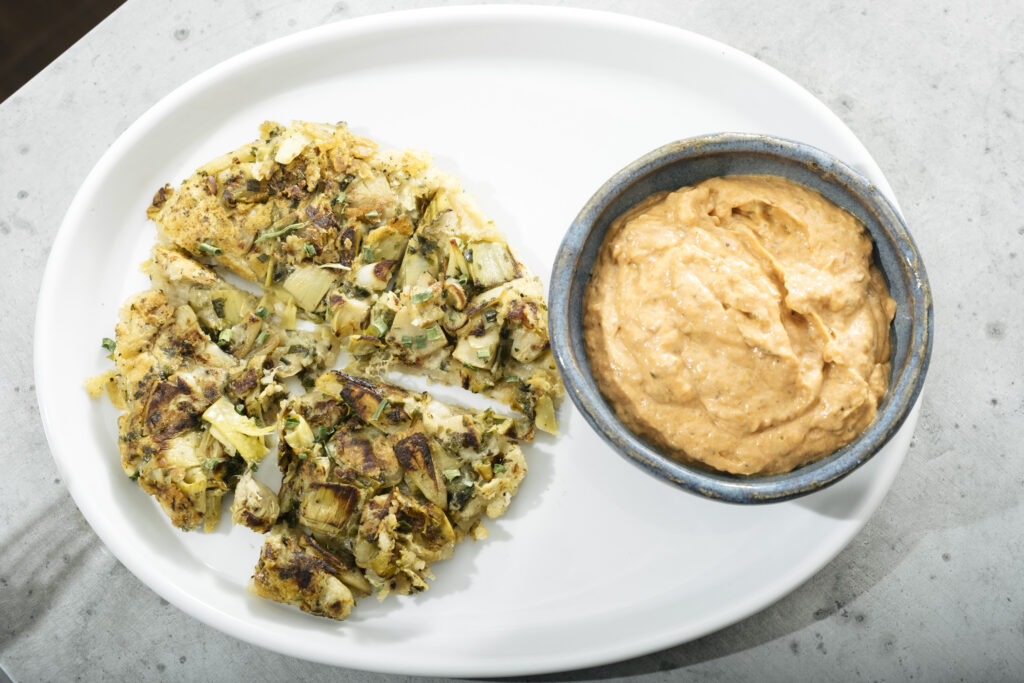sourdough cornbread
Cornbread is a timeless + festive fall favorite of mine. The only problem that can sometimes arise is a dry and crumbly texture. This sourdough cornbread is enhanced with a bit of volume and tang from a robust sourdough starter and greek yogurt. The greek yogurt ensures even moisture and lightness, coupled with a spring from the wild yeast. Bits of spicy jalapeño pepper and sharp cheddar cheese further enrich this sourdough cornbread into an all-around delight.
Serve sourdough cornbread with a bowl of cozy chili, or toast it up with some salad or soup. It also makes for a delicious sandwich, open-faced grilled cheese, or toast with eggs! Days after baking, turn sourdough cornbread into luscious croutons or toast!
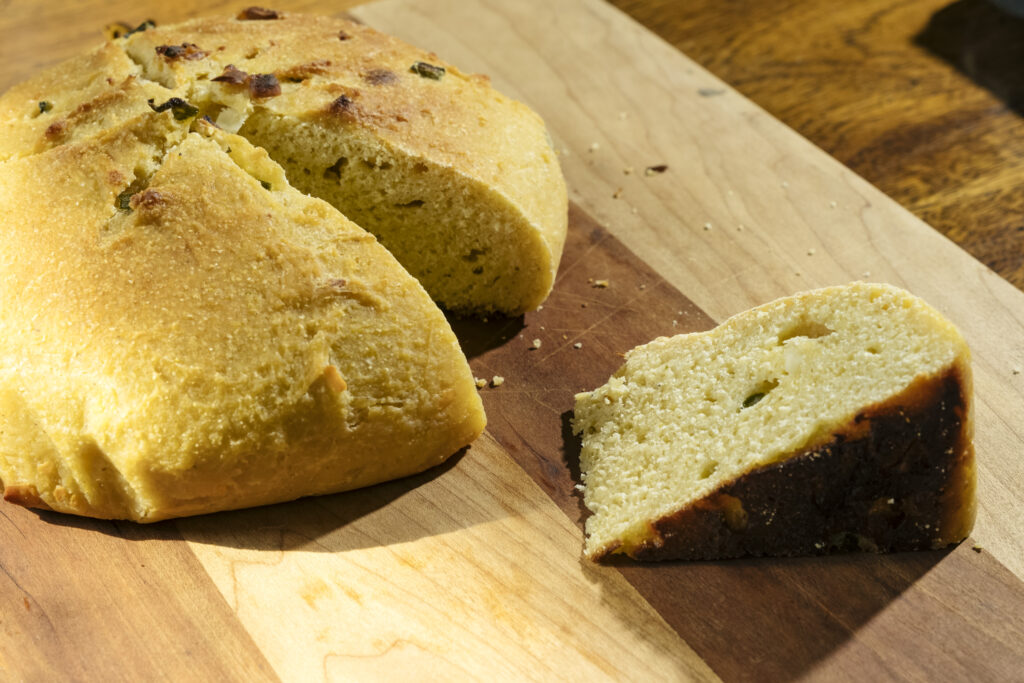
ingredients
- 138 grams / 1 cup yellow cornmeal
- 35 grams / 2 tablespoons sourdough starter
- 165 grams / ¾ cup greek yogurt
- 100 grams / ½ cup brown sugar
- 6 grams / 1 teaspoon / 6g salt
- 2 eggs
- 11 grams / 2 tablespoons jalapeños, chopped
- 59 grams / ¼ cup sharp cheddar cheese, shredded
steps
In a large bowl, mix together the cornmeal, sourdough starter, and greek yogurt until thoroughly combined. Add the brown sugar and salt and mix. Add the eggs, one at a time, until evenly incorporated. Let sit for 1-2 hours then begin to stretch and fold the dough over itself.
As you stretch the dough, layer jalapenos and cheddar over the top of the dough, then fold the stretched part over the top of the jalapenos and cheddar. Repeat until all of the jalapenos and cheddar have been incorporated.
Let the dough sit for 1 hour and repeat the stretch and fold for 4, 90° turns. Let the dough rest 12-14 hours for the bulk fermentation.
When ready to bake, preheat the oven to 475°F and place the loaf of dough on a piece of parchment paper. Bake for 45-50 minutes until the crust turns golden.
